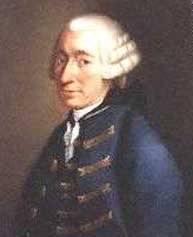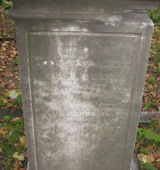Tobias Smollet, Writer
Tobias Smollett was born at Dalquhurn House on Dalquhurn Estate, in what became Renton, in 1721. He was the grandson of Sir James Smollett of Bonhill, who took the title “of Bonhill” form
his ownership of the Place of Bonhill, which was just inside Bonhill Parish by a  few yards. Sir James had purchased Dalquhurn as a residence for his “non-inheriting” children, although as
we shall see, Tobias came close to inheriting the Smollett estates and money, which would have solved many of his problems and almost certainly allowed him to produce an even greater body of work.
few yards. Sir James had purchased Dalquhurn as a residence for his “non-inheriting” children, although as
we shall see, Tobias came close to inheriting the Smollett estates and money, which would have solved many of his problems and almost certainly allowed him to produce an even greater body of work.
He was educated at Dumbarton Grammar school and went from there to Glasgow University where he studied medicine. Since he was from the poorer branch of the Smollett family, he had to work for a living when he completed his medical studies in 1741.
This took him to London where he signed up as a ship's surgeon's mate in the 1741 Cartagena Expedition. This was a naval and army force which was send to the Caribbean to attack the Spanish at Cartagena de Indias, in present day Colombia. The Expedition turned out to be a monumental fiasco for the British with 18,000 British casualties to 2,000 Spanish ones. Smollett would definitely have earned his wages and completed his medical education treating the ill and injured (as many died from tropical disease as from wounds). The experience became a source of material for his writing.
In 1744 he had settled in London and was in practice as a surgeon. It was clear, though, that he really wanted to be a writer, particularly of the new literary form which was, appropriately enough, called novel-writing. Drawing on his biographical experiences in general and of the Cartagena Expedition in particular, Smollett published his first book, Roderick Random, in 1748 when he was only 27. It was well received by the reading public and established Smollett as a writer in London society. It is still in print to-day.
His next two novels, Peregrine Pickle (1751) and Ferdinand, Count Fathom (1753) were neither as good nor so well received. However, his reputation was secure enough, and in 1753 he became editor of a new magazine, The Critical Review. This proved to be something of a mixed blessing, however, because he was jailed for libel because of an article which appeared in the magazine, although that was just one of the hazards of being a writer in the 18th century.
Further proof of the range of his intellect and abilities came in 1755 when he translated Cervantes' Don Quixote from Spanish into English. This is still regarded as one of the best translations of Don Quixote and was in print until quite recently.
However, he was often not in good health and he and his wife led a pretty hand to mouth existence in London. He was advised to go to France and Italy for the good of his health. Smollett was not impressed with either country, but recouped some of the costs by publishing an account of his journey in Travels in France and Italy in 1766.
In the same year he visited his cousin James at Cameron House (James had moved there from Place of Bonhill in 1762 or 1763). For all that he never lived in the Vale again after finishing at Glasgow University, it clearly had considerable influence on him for the rest of his life. His best-known poem is “Ode to Leven Water” and while the description of the Leven contained in it definitely dates from before the arrival of the large-scale textile industry on the Leven's banks, with its lines
“Pure stream, in whose transparent wave
My youthful limbs I wont to lave”
It is not known for certain when it was actually written. His nationality also shows that Smollett was a man of moral as well as physical courage, best shown n his poem “The Tears of Scotland”. It was written as a condemnation of Cumberland's treatment of the Highlanders after Culloden in 1746, and its appearance at all, rather than its quality, is what marks it out as deserving attention. Not only did he live in London when he wrote it, he was a former naval officer, one of the ruling classes and very much expected to toe the line. To have written such a poem in the climate of the times was a considerable risk, to do so as a former Naval officer was courting severe punishment. People were being executed for less. Smollett confronted the risk and survived.
 His final work was Humphrey Clinker 1771. It was very popular when published and is still a favourite, still in print. It did not do Smollett much good unfortunately because he died in Livorno (Leghorn)
in Italy in the same year, 1771. He was more or less penniless. Had he lived just a few years longer, he would have inherited the lands and title of “Smollett of Bonhill” from his cousin
James, who died at Cameron House “without issue” as they say, in November 1775. Tobias would therefore have lived in some style and comfort, instead of the poverty in which he died. There
was no male heir and the ownership passed to Tobias's sister, Jane.
His final work was Humphrey Clinker 1771. It was very popular when published and is still a favourite, still in print. It did not do Smollett much good unfortunately because he died in Livorno (Leghorn)
in Italy in the same year, 1771. He was more or less penniless. Had he lived just a few years longer, he would have inherited the lands and title of “Smollett of Bonhill” from his cousin
James, who died at Cameron House “without issue” as they say, in November 1775. Tobias would therefore have lived in some style and comfort, instead of the poverty in which he died. There
was no male heir and the ownership passed to Tobias's sister, Jane.
Smollett's reputation in the United States, particularly in academic circles, has always been far higher than in the UK, but even here it is undergoing something of a revival, with the publication of a recent biography.
The image is of Smollett's gravestone in the English Cemetery in Livorno. Click this to see a larger version with more detail.


